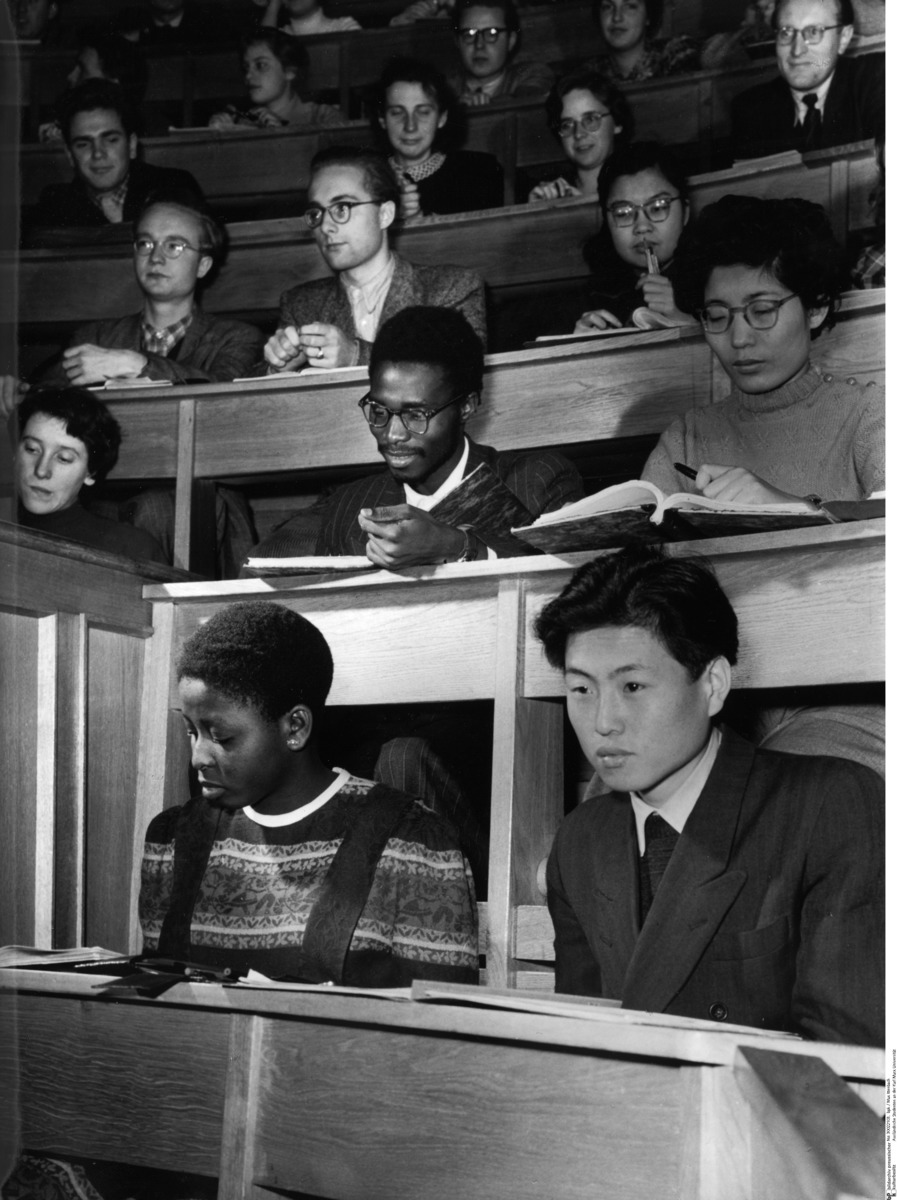Abstract
Under the ideological guidelines of “proletarian“ or “socialist internationalism,” foreign students were afforded the opportunity to study in the GDR starting in 1951. Bilateral treaties, cooperation with the Council for Mutual Economic Assistance (COMECON), and agreements with international organizations provided the framework for this initiative, which focused on student exchanges with other socialist states and the education of so-called national cadres from developing countries. At the beginning of the 1960s, approximately 1,900 foreigners studied in the GDR each year; by the start of the 1970s, that number had already grown to over 4,700 per year; and by the mid-1980s, the number of foreign students at GDR universities had already surpassed 10,000. The GDR tried to present itself to foreign students as the anti-fascist–and thus better–Germany. Photo by Max Ittenbach.
